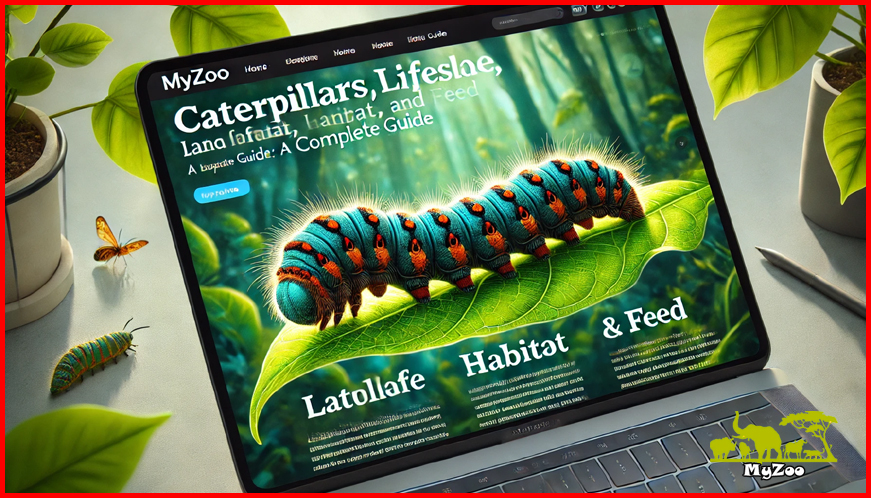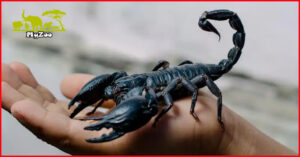
Caterpillars Lifespan, Habitat, and Feed: A Complete Guide
Caterpillars are among the most fascinating creatures in the insect world. These tiny, often vibrant larvae undergo an incredible transformation into butterflies and moths. Understanding a caterpillar’s lifespan, habitat, and feeding habits is essential not only for nature lovers but also for gardeners, researchers, and conservationists. In this comprehensive guide, we’ll explore everything you need to know about these intriguing creatures.
Caterpillar Lifespan: How Long Do They Live?
Caterpillars have varying lifespans depending on their species, environmental factors, and available food sources. Typically, a caterpillar’s lifespan consists of four main stages:
- Egg Stage (3-10 days) – The caterpillar begins life as an egg laid by an adult butterfly or moth.
- Larval Stage (2-5 weeks) – This is the caterpillar phase, where it grows rapidly, sheds its skin multiple times, and feeds voraciously.
- Pupal Stage (1-3 weeks or longer) – The caterpillar forms a cocoon (moths) or a chrysalis (butterflies), undergoing metamorphosis.
- Adult Stage (1 week to several months) – The transformed butterfly or moth emerges, mates, and lays eggs to continue the cycle.
Factors Influencing Caterpillar Lifespan
- Species: Different species have distinct lifespans. For example, Monarch caterpillars develop in about two weeks, while some moth species take longer.
- Climate & Environment: Cold temperatures can slow down development, while warm conditions speed it up.
- Predators & Threats: Birds, wasps, and parasites can significantly reduce a caterpillar’s lifespan.
- Food Availability: A caterpillar’s growth is directly linked to the quality and availability of its food source.
Caterpillar Habitat: Where Do They Live?
Caterpillars are highly adaptable and found across various ecosystems. However, they thrive best in environments that provide ample food sources and protection from predators.
Common Caterpillar Habitats
| Habitat Type | Description |
|---|---|
| Forests | Abundant leaves and natural camouflage provide safety. |
| Gardens & Farms | Common due to diverse plant life; some species are considered pests. |
| Grasslands & Meadows | Host plants like milkweed support Monarch caterpillars. |
| Wetlands | Some species prefer moisture-rich environments. |
| Urban Areas | Adapted species may survive on ornamental plants and trees. |

How Caterpillars Adapt to Their Habitats
- Camouflage: Many species blend into their surroundings to avoid predators.
- Toxic Defense Mechanisms: Some caterpillars store toxins from their host plants to deter predators.
- Burrowing & Shelter-Seeking: Certain species burrow into leaves or soil for protection.
What Do Caterpillars Eat?
Caterpillars are known for their insatiable appetites. They consume a variety of plants depending on their species.
Types of Caterpillar Food
1. Leaf-Eating Caterpillars
The majority of caterpillars feed on plant leaves. Some popular host plants include:
- Milkweed (for Monarchs)
- Oak, Maple, and Birch trees (for various moth species)
- Tomato and cabbage plants (common in home gardens)
2. Flower & Fruit Feeders
- Some caterpillars, like the Passionflower Butterfly caterpillar, feed on flowers and fruit.
3. Wood and Bark Feeders
- Certain species, such as the Carpenter Moth caterpillar, burrow into wood.
4. Carnivorous Caterpillars (Rare)
- Some caterpillars, such as the Hawaiian Eupithecia, feed on insects.
Feeding Patterns and Strategies
- Diurnal vs. Nocturnal Feeding: Some species eat during the day, while others prefer nighttime feeding to avoid predators.
- Selective vs. Generalist Feeding: Some caterpillars are host-specific, while others can eat a variety of plants.
The Role of Caterpillars in the Ecosystem
Caterpillars play a crucial role in maintaining ecological balance:
- Primary Consumers: They help regulate plant populations by consuming leaves.
- Prey for Other Species: Birds, reptiles, and insects rely on caterpillars as a food source.
- Pollination: While rare, some caterpillar species contribute to pollination.
- Soil Enrichment: Their droppings contribute to soil fertility.
How to Protect Caterpillars in Your Environment
1. Create a Caterpillar-Friendly Garden
- Plant native host plants like milkweed and wildflowers.
- Avoid using pesticides that can harm caterpillars.
2. Provide Shelter & Protection
- Allow natural vegetation to grow.
- Place protective mesh over plants to prevent predators from attacking caterpillars.
3. Educate and Raise Awareness
- Teach others about the importance of caterpillars in biodiversity.
- Participate in butterfly conservation projects.
The Caterpillar Life Cycle: Reproduction and Metamorphosis

The caterpillar, a voracious eating machine, represents just one stage in the fascinating life cycle of butterflies and moths. Their primary role is to consume and grow, preparing for the dramatic transformation that awaits. But how does this process begin? Caterpillar reproduction is intrinsically linked to the adult butterfly or moth stage.
The reproductive process starts with adult butterflies or moths, which mate and the female lays eggs. These eggs, often deposited on specific host plants that will serve as the caterpillar’s food source, are the beginning of the caterpillar’s journey. The size, shape, and color of the eggs vary depending on the species. Some are laid singly, while others are clustered together.
Once the egg hatches, the larva, or caterpillar, emerges. Its primary focus is eating and growing. Caterpillars possess strong mandibles for chewing leaves and other plant matter. They undergo a series of molts, shedding their skin to accommodate their increasing size. This growth spurt is crucial, as the caterpillar stores energy for the next stage.
While the caterpillar itself doesn’t reproduce, its existence is entirely dedicated to preparing for reproduction in the next generation. The energy it stores during its larval stage fuels the metamorphosis into a pupa (chrysalis for butterflies), and then into the sexually mature adult butterfly or moth.
The adult butterfly or moth emerges from the pupa, ready to mate and continue the cycle.
This adult stage is dedicated to reproduction.They find mates, and the female lays eggs, starting the process anew. Therefore, the caterpillar’s role in reproduction is indirect but essential. It’s the engine that powers the next generation’s ability to reproduce, ensuring the continuation of the species. The caterpillar’s growth and development are crucial for the successful reproduction of butterflies and moths. Sources and related content
Frequently Asked Questions (FAQs)
1. How long does a caterpillar stay in the larval stage?
Most caterpillars remain in the larval stage for 2-5 weeks, depending on species and environmental conditions.
2. Can caterpillars eat anything besides leaves?
Yes, while most caterpillars eat leaves, some consume flowers, fruit, wood, or even other insects.
3. Do all caterpillars turn into butterflies?
No, some caterpillars develop into moths instead of butterflies.
4. What is the best way to identify a caterpillar?
You can identify caterpillars based on their color, markings, body shape, and preferred food source.
5. What should I do if I find a caterpillar in my garden?
If it is a beneficial species, consider leaving it undisturbed. If it’s a pest, research eco-friendly ways to manage it.
Conclusion
Caterpillars are essential creatures that contribute to the environment in various ways. Understanding their lifespan, habitat, and feeding habits helps us appreciate their role in nature and find ways to protect them. Whether you’re a gardener, a butterfly enthusiast, or simply curious about these fascinating larvae, nurturing a caterpillar-friendly environment can make a difference.
Have you ever observed a caterpillar’s transformation? Share your experiences in the comments below! Also, don’t forget to explore more nature-related articles on our website!

